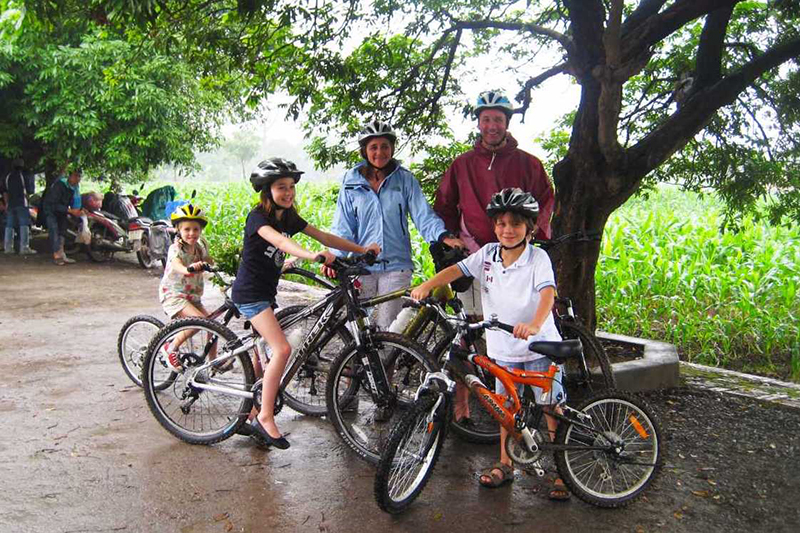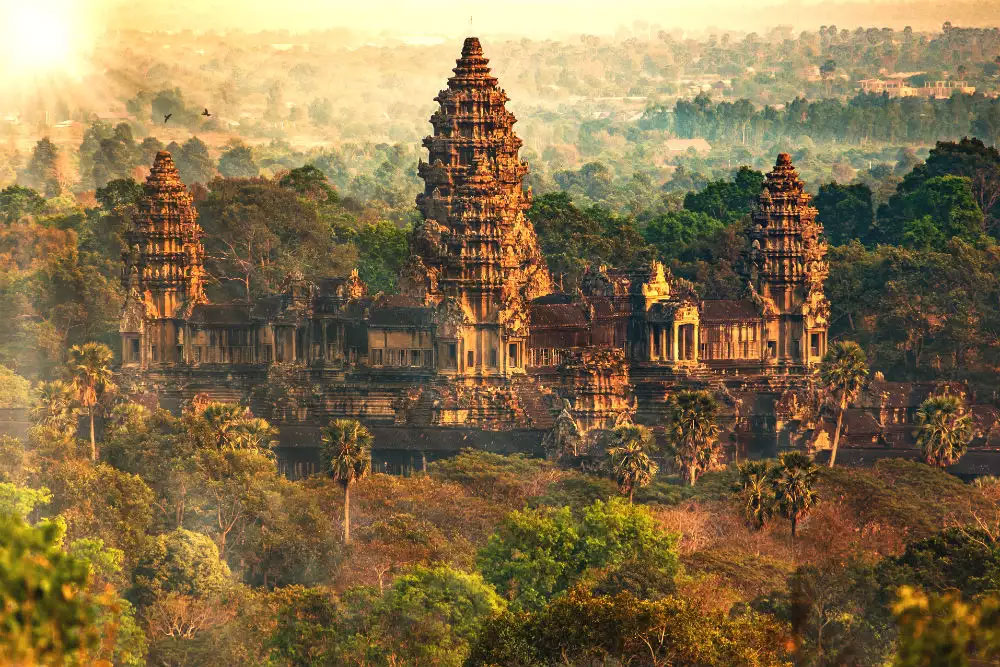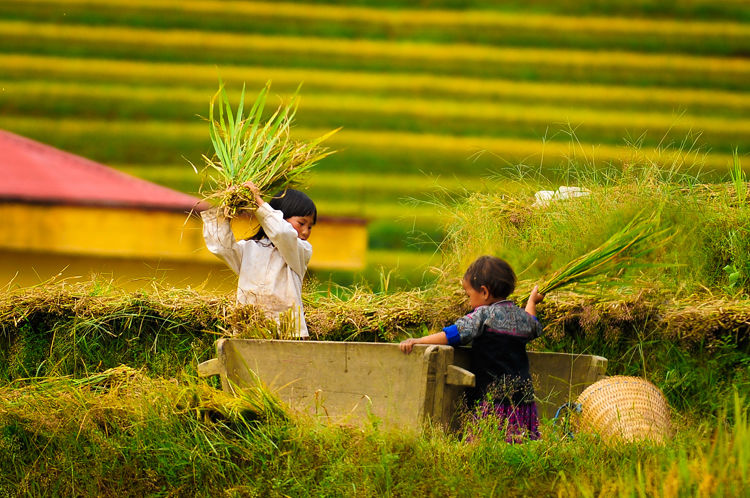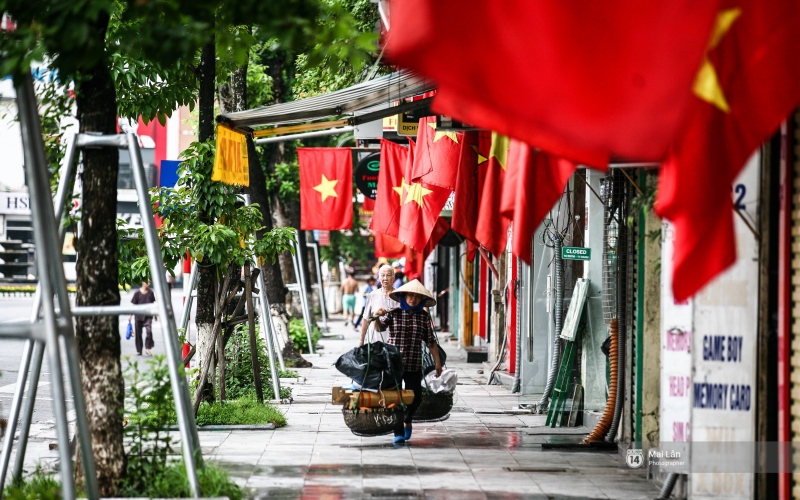15 Ng. 100 Đ. Nguyễn Xiển, Thanh Xuân Nam, Thanh Xuân, Hà Nội 100000
Nestled in the southern reaches of Laos, the Bolaven Plateau stands as a verdant oasis, a stark contrast to the often-dry plains. This elevated region, characterized by its fertile volcanic soil, cool climate, and abundant rainfall, is a sensory delight. It's a land where cascading waterfalls plunge into lush gorges, where the aroma of roasting coffee beans lingers in the air, and where the rich tapestry of ethnic minority cultures thrives.
For the adventurous traveler, the Bolaven Plateau offers an immersive experience unlike anywhere else in Southeast Asia. It’s a place to escape the heat, connect with nature, and delve into the fascinating world of coffee production, all while being captivated by breathtaking landscapes. From the thunderous roar of colossal waterfalls to the quiet charm of local villages, the plateau promises an unforgettable journey.
The Bolaven Plateau, whose name is believed to derive from the Laven ethnic group who have long inhabited the area, is an ancient volcanic caldera. Over millennia, its volcanic origins have blessed the region with incredibly rich, red basaltic soils – the perfect foundation for cultivating some of the world's most prized coffee beans.
Spanning across the provinces of Champasak and Salavan, the plateau sits at an average elevation of 1,000 to 1,350 meters (3,300 to 4,400 feet) above sea level. This altitude accounts for its remarkably cooler temperatures compared to the rest of lowland Laos, making it a refreshing escape, especially during the hot season. The consistent rainfall, particularly during the wet season (May to October), feeds its numerous rivers and streams, giving birth to the spectacular waterfalls that are the plateau’s hallmark.
The plateau is crisscrossed by several rivers, including the Xe Don, Xe Kaman, and Xe Katam. These rivers, fed by the abundant rainfall, carve deep gorges and then tumble over dramatic cliffs, creating an astonishing array of waterfalls. These cascades are not just scenic attractions; they are vital to the local ecosystem and the lives of the communities living on the plateau. They also serve as a significant source of hydroelectric power for Laos.
The Bolaven Plateau is synonymous with coffee. It is the undisputed coffee capital of Laos, producing the vast majority of the nation's beans. The French colonialists introduced coffee cultivation to the region in the early 20th century, recognizing the ideal conditions for the crop. Today, coffee is not just an agricultural product; it's a way of life for thousands of families on the plateau.
Both Arabica and Robusta coffee varieties thrive here. Arabica, known for its complex flavors and aromatic qualities, is typically grown at higher altitudes. Robusta, hardier and with a stronger, bolder taste, is grown at slightly lower elevations. Lao coffee, particularly Arabica from the Bolaven Plateau, is increasingly gaining international recognition for its smooth, low-acidity profile.
Understanding the coffee journey from cultivation to cup offers a deeper appreciation for this beloved beverage.
Planting: Coffee seedlings are carefully planted, often in the shade of larger trees to protect them from direct sunlight.
Growing: It takes several years for a coffee tree to mature and begin producing cherries.
Harvesting: The red, ripe coffee cherries are hand-picked, a labor-intensive process that ensures only the best beans are selected. This typically occurs between October and March.
Processing: There are two main methods:
Wet Method: Cherries are pulped to remove the outer skin, fermented to break down mucilage, washed, and then dried. This method often results in cleaner, brighter flavors.
Dry Method: Cherries are spread out to dry in the sun, then hulled to remove the dried skin and pulp. This method can produce a fuller-bodied coffee with more intense flavors.
Milling: The dried coffee beans (parchment coffee) are hulled to remove the remaining layers.
Grading and Sorting: Beans are sorted by size and quality.
Roasting: This is where the magic happens! Roasting transforms the green beans, unlocking their aromatic oils and distinct flavors.
Grinding and Brewing: Finally, the beans are ground and brewed to create that perfect cup of coffee.
Many coffee plantations and processing centers on the plateau offer tours, allowing visitors to witness these processes firsthand, from the picking of cherries to the art of roasting. Sampling freshly brewed coffee directly from the source is an absolute highlight.
Visiting coffee farms on the Bolaven Plateau not only offers an educational and sensory experience but also directly supports local farmers and sustainable agricultural practices. Many farms practice organic methods and fair trade principles, ensuring that the benefits of your visit reach the communities that make this region so special.
The sheer number and diversity of waterfalls on the Bolaven Plateau are simply breathtaking. Each one possesses its own unique charm and power.
Perhaps the most iconic of all, Tad Fane (also known as Tad Phane) is a truly awe-inspiring sight. Two powerful streams, the Houay Bang Lieng and the Houay Champy, plunge a staggering 120 meters (390 feet) down a sheer cliff face into a deep, lush gorge. Viewing platforms offer panoramic vistas of this majestic spectacle. The roar of the water is immense, and the mist rising from the gorge creates a perpetually verdant environment. There's also an option for ziplining across the gorge for the ultimate thrill-seekers!
Located close to each other, Tad Yuang (also known as Tad Gneuang) and Tad Champi (also known as Tad Champee) are incredibly popular due to their accessibility and beautiful surroundings.
Tad Yuang offers a series of cascading tiers, with a wide pool at the bottom perfect for a refreshing dip (check conditions, as currents can be strong). Lush greenery and well-maintained pathways make it a pleasant spot for a picnic and photography.
Tad Champi is a more serene and less crowded waterfall, offering a tranquil escape. It features a beautiful, wide curtain of water cascading into a clear pool, ideal for swimming. The surrounding forest provides a peaceful atmosphere.
Tad Lo is not just a waterfall; it's a small village and a popular base for exploring the plateau. The waterfall itself consists of three tiers:
Tad Lo Lower: The most accessible, often with locals swimming.
Tad Lo Middle: A larger, more impressive cascade.
Tad Lo Upper (Tad Suong): The largest and most powerful, requiring a short trek.
The area around Tad Lo is known for its relaxed atmosphere, guesthouses nestled by the river, and opportunities for elephant trekking or exploring nearby ethnic villages.
Paksong Waterfall (Tad Katamtok): Another impressive waterfall near Paksong, often less visited but equally stunning.
Tham Phiang Waterfall: Known for its caves behind the falls, offering a unique perspective.
Pha Suam Waterfall: A picturesque, horseshoe-shaped waterfall with a cultural village nearby.
Exploring these waterfalls often involves short hikes through lush jungle, offering opportunities to spot diverse flora and fauna. Remember to wear appropriate footwear and be mindful of slippery paths, especially during or after the wet season.
Beyond the stunning landscapes and aromatic coffee, the Bolaven Plateau is home to a rich tapestry of ethnic minority groups, each with their distinct languages, customs, and traditions. The most prominent groups include the Laven, Alak, Katu, Ta-oy, and Nge.
Visiting the villages of these communities offers a profound insight into their traditional ways of life. You might observe traditional weaving, basket making, or see their unique housing styles. Many communities welcome visitors, offering a chance to learn about their daily routines, agricultural practices, and perhaps even share a meal.
When visiting ethnic villages, it's crucial to practice responsible tourism:
Dress modestly: Especially when visiting homes or religious sites.
Ask permission before taking photos: Particularly of people.
Be respectful: Of local customs and traditions.
Support local crafts: Purchasing directly from artisans provides economic support.
Engage with respect: A simple "Sabaidee" (hello) and a smile can go a long way.
Consider a guided tour: Local guides can facilitate meaningful interactions and ensure cultural sensitivity.
Understanding and respecting these diverse cultures enriches the travel experience, fostering positive interactions between visitors and host communities.
Exploring the Bolaven Plateau can be done in various ways, from short day trips to multi-day explorations.
The main gateway to the Bolaven Plateau is Pakse, the capital of Champasak Province. Pakse is well-connected by air, bus, and even boat (from the Four Thousand Islands).
By Air: Pakse International Airport (PKZ) has direct flights from Vientiane, Luang Prabang, Bangkok (Thailand), and Ho Chi Minh City (Vietnam).
By Bus: Buses connect Pakse to major towns in Laos (Vientiane, Savannakhet, Thakhek) and across the border (Thailand, Cambodia).
By Boat: Connections exist from Don Det and Don Khone in the Si Phan Don (4000 Islands) region.
Motorbike: The most popular and adventurous way to explore the plateau is by renting a motorbike in Pakse. There are several well-established "loops" (the short loop and the big loop) that take you to various waterfalls and coffee farms. Ensure you have proper insurance, a valid international driving permit, and experience riding a motorbike. Roads can be unpaved or challenging in parts.
Tuk-tuk/Taxi: You can hire a tuk-tuk or private taxi from Pakse for day trips to specific waterfalls or for a customized tour.
Organized Tours: This is often the most convenient and safest option, especially if you prefer not to drive or want in-depth insights from a local guide.
Golden Trail Travel offers expertly curated tours to the Bolaven Plateau, ensuring a seamless and enriching experience. Their local guides provide invaluable knowledge about the region's coffee, culture, and nature, while their carefully planned itineraries cover the must-see waterfalls and offer unique cultural encounters. With Golden Trail Travel, you can relax and immerse yourself in the beauty of the plateau, knowing all the logistics are handled.
Visit https://goldentrailtravel.com/ to discover their tailored Laos tour packages, including exciting Bolaven Plateau adventures!
The dry season (October to April) is generally considered the best time. The weather is cooler and more pleasant for exploring. Waterfalls are still impressive, though their volume might be slightly less than during the peak wet season. The coffee harvest also takes place during these months, offering opportunities to see the picking and processing.
The wet season (May to September) brings lush greenery and the waterfalls are at their most powerful and spectacular. However, paths can be muddy, and some roads might be challenging for motorbikes.
Comfortable walking shoes: For exploring waterfalls and coffee farms.
Swimsuit: If you plan to swim in waterfall pools.
Rain jacket/Poncho: Especially during the wet season or for waterfall mist.
Sun protection: Hat, sunglasses, and sunscreen are essential.
Insect repellent: Especially for jungle treks.
Refillable water bottle: Stay hydrated and reduce plastic waste.
Camera: For stunning landscapes.
Small backpack: For day trip essentials.
Cash (Lao Kip): Smaller villages and vendors might not accept cards.
An open mind and respectful attitude!
Support local businesses: Eat at local restaurants, buy handicrafts directly from artisans.
Minimize your waste: Carry out what you carry in.
Respect nature: Do not litter, stay on marked paths, do not disturb wildlife.
Learn a few basic Lao phrases: It goes a long way with locals.
Be mindful of water usage: Especially in rural areas.
While coffee and waterfalls are the main draws, the Bolaven Plateau offers other fascinating experiences:
Some villages specialize in traditional Lao silk weaving. You can observe the intricate process from silkworm to finished product and purchase beautiful textiles directly from the weavers. Other crafts include basketry and wood carving.
Beyond coffee, the plateau's fertile soils support a variety of crops, including tea, cardamom, pepper, and durian. Exploring the farms dedicated to these products can offer another dimension to your visit.
Numerous informal trails connect villages and lead to lesser-known waterfalls. For serious trekkers, multi-day treks can be organized with local guides, offering deep immersion into the natural beauty and ethnic cultures.
The diverse ecosystem of the Bolaven Plateau is home to a wide array of medicinal plants. Some local communities have extensive knowledge of traditional herbal remedies, often passed down through generations. Exploring this aspect with a knowledgeable local guide can be a fascinating experience.
Q1: What is the Bolaven Plateau known for? A1: The Bolaven Plateau is renowned for its stunning waterfalls, fertile coffee plantations (producing Laos's best coffee), cool climate, and diverse ethnic minority cultures.
Q2: Where is the Bolaven Plateau located? A2: It's located in Southern Laos, primarily within Champasak and Salavan provinces, with Pakse being the main gateway city.
Q3: How do I get to the Bolaven Plateau? A3: The easiest way is to fly into Pakse International Airport (PKZ). From Pakse, you can rent a motorbike, hire a tuk-tuk/taxi, or join an organized tour to explore the plateau.
Q4: What's the best way to explore the waterfalls and coffee farms? A4: The most popular methods are by motorbike (doing the "Bolaven Plateau loop") or by joining an organized tour. A guided tour is recommended for convenience, safety, and cultural insights.
Q5: What are the must-see waterfalls on the Bolaven Plateau? A5: Tad Fane (Tad Phane), Tad Yuang (Tad Gneuang), Tad Champi (Tad Champee), and Tad Lo are among the most popular and accessible waterfalls.
Q6: When is the best time to visit the Bolaven Plateau? A6: The dry season (October to April) offers cooler, more pleasant weather for exploration and coincides with the coffee harvest. The wet season (May to September) sees the waterfalls at their most powerful.
Q7: Can I visit coffee plantations on the plateau? A7: Yes, many coffee farms offer tours where you can learn about the coffee production process from bean to cup and sample fresh brews. This supports local farmers.
Q8: Are there opportunities to interact with ethnic minorities? A8: Yes, the plateau is home to several ethnic groups (Laven, Alak, Katu, etc.). Organized tours or respectful independent visits to villages offer cultural exchange opportunities. Remember to be culturally sensitive.
Q9: Is it safe to swim in the waterfall pools? A9: Many waterfalls have pools suitable for swimming. However, always exercise caution, check for strong currents, and be aware of slippery rocks. Locals can advise on safe spots.
Q10: Can Golden Trail Travel help me plan my trip to the Bolaven Plateau? A10: Absolutely! Golden Trail Travel specializes in immersive tours to the Bolaven Plateau and other parts of Laos. Visit https://goldentrailtravel.com/ to explore their tour packages and book your adventure.
"Our trip to the Bolaven Plateau with Golden Trail Travel was the highlight of our Laos adventure! The waterfalls were stunning, and learning about coffee production firsthand was incredibly interesting. Our guide was knowledgeable and passionate, making the experience truly immersive."
— Jessica R., Melbourne, Australia
"I highly recommend exploring the Bolaven Plateau with Golden Trail Travel. Their tour was perfectly organized, allowing us to see the most beautiful waterfalls and visit authentic coffee farms. The insights into the local culture were invaluable. Five stars!"
— Mark T., Vancouver, Canada
"As a coffee lover, visiting the Bolaven Plateau was a dream come true. Golden Trail Travel designed an excellent itinerary that covered both the majestic waterfalls and gave us a deep dive into the world of Lao coffee. The fresh coffee at the farms was the best I've ever tasted!"
— Chun-Li W., Singapore
"We rented motorbikes and did a self-guided tour for a day, but wished we had booked with Golden Trail Travel from the start! For our second day, we joined one of their tours, and the difference was incredible – so much more insight and convenience. They truly know the area."
— Emilie B., Paris, France
"The Bolaven Plateau is a hidden gem, and Golden Trail Travel helped us discover its magic. From the thunder of Tad Fane to the tranquility of the coffee plantations, every moment was special. Their commitment to responsible tourism is also a huge plus."
— Sam K., London, UK
The Bolaven Plateau is far more than just a collection of waterfalls and coffee farms; it is a vibrant ecosystem where nature's grandeur, agricultural passion, and rich cultural traditions harmoniously coexist. It offers a refreshing escape from the ordinary, inviting travelers to slow down, breathe in the fresh, cool air, and engage with the authentic heart of Southern Laos.
Whether you're a nature enthusiast captivated by the power of cascading water, a coffee connoisseur eager to trace your favorite brew from bean to cup, or a cultural explorer seeking genuine encounters with diverse communities, the Bolaven Plateau promises an enriching and unforgettable journey. It's a destination that appeals to all senses, leaving you with lasting memories and perhaps even a newfound appreciation for the simple pleasures of a perfectly brewed cup of coffee.
Ready to immerse yourself in the natural beauty and rich culture of the Bolaven Plateau? Let Golden Trail Travel be your expert guide. With their local knowledge, commitment to sustainable tourism, and seamless planning, you can experience the best of this enchanting region. Visit https://goldentrailtravel.com/ today to browse their tailor-made Laos tour packages and start planning your Bolaven Plateau adventure!

.jpg)
Bac Ninh cycling lets you experience the beautiful Vietnamese countryside in the northern Vietnam. Pedaling on the back roads, through rural village lanes while greeting local farmers and school kids as you pass by, all add to an immersive experience!
May 28, 2025
.jpg)
Electric bikes, or e-bikes use rechargeable batteries to assist cyclists with a small electric motor. E-bikes are particularly suitable for holidays, as they allow people who do not share the same level of fitness to enjoy cycling activities together. Cycling in Vietnam with our electric bicycles is a truly amazing experience — They help cyclists ride longer distances per day trip, and navigate routes with uphill sections more easily. This makes a wider range of destinations accessible to a wider range of cyclists, including senior cycling tourists. Wandering through rural villages, eating delicious food, and enjoying this country’s great landscape. From long-distance treks to shorter rides and sightseeing, there is a route for everyone!
May 28, 2025
.jpg)
We have a wide range of kids bikes for our bike tours in Hanoi Vietnam. Our small bicycles are used for both boys and girls. There is no difference between boy bikes and girl bikes. The bike frame is the same – Children’s bikes are sized by wheel rather than frame because it’s the wheels that determine the proportions of the rest of the bike. Make sure your child can operate the brake and gear levels comfortably, and that the pedals are positioned for safe stopping.
May 28, 2025
.jpg)
A single speed bicycles or a fixed gear bike is a type of bicycle with a single gear ratio. These bicycles are without derailleur gears, hub gearing or other methods for varying the gear ratio of the bicycle. There are many types of single speed bicycles such as single speed bikes for children, cruiser type bicycles, classic commuter bicycles, unicycles, bicycles designed for track racing, fixed-gear road bicycles, and single-speed mountain bikes.
May 28, 2025
.jpg)
Mountain bikes are designed to be ridden over rugged terrain and technical trails with logs, rocks, roots and other obstacles. They have a sharp frame geometry that puts the rider in a commanding position to pedal and climb efficiently. They have lower gear ratios that allow riders to pedal through steep and difficult terrain. Because of their intended use, mountain bikes are sturdy and overbuilt to handle the abuse of the trails. They usually have larger, heavily knobbed tires and strong brakes like hydraulic disc brakes. Many mountain bikes feature a kind of suspension shock over the front tire or both front and rear, allowing the frame to comply with the bumps, jumps and challenges of the trail.
May 28, 2025
.jpg)
Giant are the world’s leading brand for quality and safety in bikes. Giant Anyroad bicycles are designed with a lightweight yet durable ALUXX alloy frame featuring a taller headtube and increased toptube stand-over distance for confident handling.
May 28, 2025

Hanoi Cycling lets you experience the beautiful countryside of the Vietnam’s capital, as well as rural Hanoi village life from up close. Pedaling on the back roads, through countryside lanes while greeting local farmers and school kids as you pass by, all add to an immersive experience!
May 28, 2025
.jpg)
Hybrid bicycles are a combination of a road bike and a mountain bike. Hybrid bikes feature relaxed frame geometry and raised handlebars, meaning that you sit up straigh
May 28, 2025
.jpg)
At the inaugural night tour of Cuc Phuong National Park in northern Vietnam on Saturday, close to a hundred visitors took part in a variety of activities.
A park spokesman said that most visitors were excited to take part in the trip.
May 28, 2025

In Cambodia, the climate is tropical, and stays warm all year long. It is governed by the monsoon winds, so that this country has two main seasons in a year.
May 28, 2025

Mu Cang Chai is a highland district of Yen Bai province, about 280km from Hanoi. Each season, this place receives thousand domestic and international tourists. The district lies at the foot of the Hoang Lien Mountains, at an altitude of 1,000 m above sea level. To reach Mu Cang Chai district, go through Khau Pha pass - one of the four Great Passes of the Northwest.
May 28, 2025

People said that “If one has not visited floating market, he has not visited the south-west of Vietnam”. Literally, floating markets which have been around for a long time make the liveliest part of life in the south-west, the land of rivers, canals and ditches.
May 28, 2025

If you are in Vietnam on September 2, you will feel the extraordinary daily life of Vietnamese people. So what activities are recommended on this day?
May 28, 2025

Pottery class Bat Trang is one of activity with unique experience which help people to reduce stress and improve the creativity.
May 28, 2025

Prime Minister Prayut Chan-o-cha says Thailand will open the country to visitors from 46 countries instead of only 10 Covid-19 low-ríkyy countries announced earlier, starting from Nov 1.
May 28, 2025